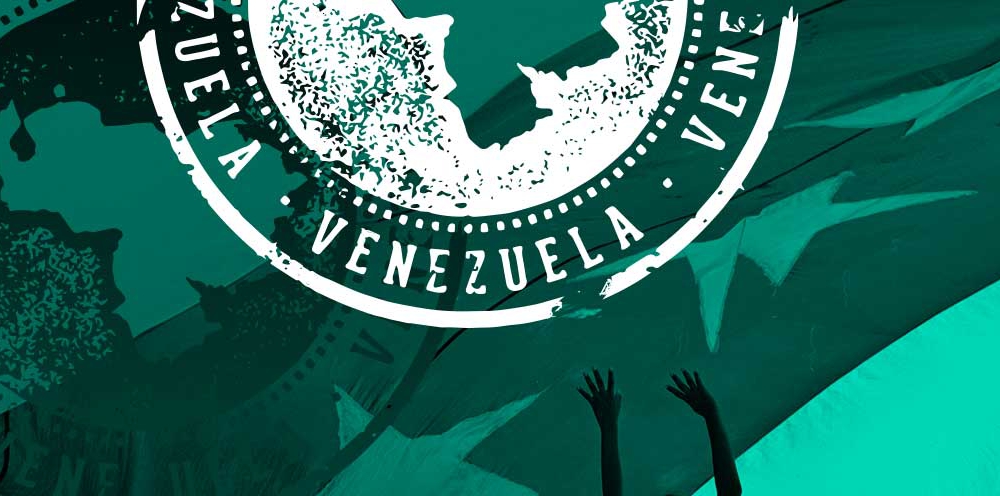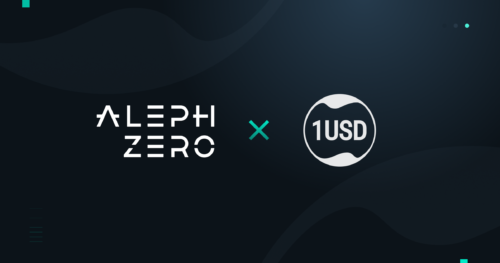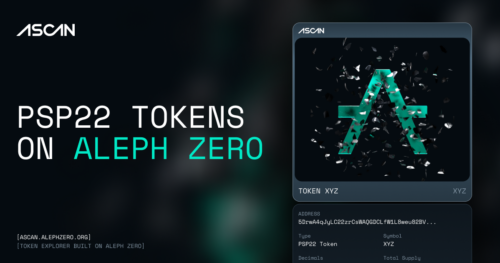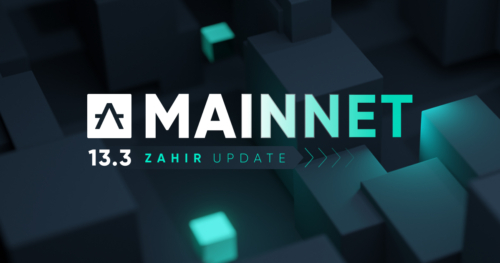Blockchain Adoption in Venezuela
Nov 24, 2021

Latin America has seen incredible development in adopting a wide range of blockchain solutions, with Venezuela being an especially interesting case for the technology’s implementation.
As probably most of you know, Venezuela has been making headlines the past few years due to the economic woes that have befallen it. The oil-rich country has been struck by hyperinflation through a combination of external economic shocks and a history of internal policy decisions that resulted in the tragic state of affairs we see today. Before we take a look at the current state of blockchain adoption in Venezuela, we must at least have a basic understanding of the economic missteps that led to the situation in the country.
So What Happened?
The economic and social policies of any country are a nuanced matter, and Venezuela is no different. An in-depth look at the country’s economic history would warrant a separate article, so we will try our best to give a brief, objective overview.
The first thing we must understand is that Venezuela has the largest oil reserves globally and has based its economy on fossil fuel for many years. This has resulted in something that economists call Dutch disease. This is a state in which governments develop a pathological relationship with natural resource exports and deprive the economy of crucial investments in other sectors. The investment portfolio of Venezuela lacked diversification, a rookie mistake in finance. Additionally, the country is infamous for corruption and nepotism, ranking 176/180 on Transparency International’s corruption index.

Oil, Corruption, and Welfare
From 1999-2013, Hugo Chavez was the president of the country. He has been a controversial subject of both admiration and hostility. Characteristics of his rule included the aforementioned nepotism, state brutality, and the stifling of political dissent. The autocratic rule and dependence on oil reserves effectively turned Venezuela into a petrostate. As history taught us, the central planning of economies rarely goes well, and his rule saw the country spiral into mismanagement and misplaced investments. Oil production during his reign fell from 3.3 million barrels per day to 2.4 million barrels per day in 2012. Despite the dramatic decrease in production, financial consequences would wait a few years to arise because of high oil prices.
Throughout his presidency, Hugo Chavez introduced broad social welfare programs that had two major effects. On the one hand, it made him hugely popular among large swathes of the Venezuelan population. Profits generated by the oil sector financed these programs. The social policies, dubbed “Revolucìon bolivariana,” focused on improving the livelihood of the country’s poorest inhabitants. Public housing, subsidized food redistribution, medical treatment, and governmental jobs found their way into the hands of the underprivileged. This resulted in an impressive drop in the poverty rate. In 2002, 48.6 percent of the population lived in poverty; 9 years later, that number dropped by almost 20 percent.
Everything Comes to An End
The social reforms introduced by Hugo Chavez were, to put it mildly, unsustainable. The oil sector was nationalized and prioritized over other industries. Investments in other sectors were neglected, and the numerous restrictions on economic activity made it difficult to conduct business with international partners. We must also note that Hugo Chavez led an aggressive narrative against the United States of America. He actively sought allies among countries with similarly antagonistic feelings towards the U.S.A, such as Iran and Syria. These alienating policies put Venezuela in an incredibly unfavorable position. The country was also unraveling internally, with homicide rates spiraling out of control. During the 2003-2011 period, Venezuela was a more dangerous place than war-torn Iraq.
You may be asking now, where did things go from bad to worse? Fiscal policy was Venezuela’s soft, vulnerable underbelly for many years, with inflation rates at 20.1 percent in 2012. In 2013 Hugo Chavez died, paving the way for the dictatorship of Nicolàs Maduro. The new leader continued the policies of political repression and censorship. The critical moment for the country appeared in 2014 when oil prices plunged. This resulted in inflation rates going “through the roof” and enter the dreaded realm of hyperinflation.
Between 2015-2018 the country’s GDP dropped 70%. Despite the passing years, the government has not managed to curb inflation. What’s more, they have even managed to exacerbate it through excessive money printing. In 2021, the average yearly inflation rate is hovering at around 2,719%. The social costs have been devastating, with 76.6% of the population living in extreme poverty. These tragic circumstances resulted in a humanitarian crisis and a massive exodus of Venezuelan’s abroad. Over five million people have escaped the violence, insecurity, political repression, and lack of essential services.
Introducing The Petro
One of the steps that the Venezuelan government under Maduro undertook to combat the economic crisis came in the form of a national cryptocurrency dubbed “Petro”. This unconventional idea was broadcast to the world in 2018. A bold declaration that ended up more of an empty promise than a functioning currency. The idea was first floated to Maduro in 2017 as a way to combat hyperinflation by creating a digital currency that would be backed by the country’s oil reserves. It was also seen as a way for the authoritarian regime to escape the painful sanctions enforced by the United States of America and international organizations. This was a surprising about-face because the government saw cryptocurrencies as a threat to state authority. The decentralized nature of cryptocurrencies where no authority figure is in charge is generally not a fit for the value system of authoritarian regimes.
Initially, the project designer Gabriel Jiménez, founder of the start-up Social Us, envisioned Petro as a free-floating currency based on the Ethereum blockchain. This would allow the currency to escape governmental control and truly transform the way the citizens of Venezuela would be able to move money around without the currently enforced restrictions. This idealistic vision faltered once confronted with governmental brute force. The government pressured the developers to tie the country’s cryptocurrency to oil, essentially making the token a bond.
The Petro in Practice
The development of the Petro went just as badly as one can expect an authoritarian regime’s shot at creating a cryptocurrency can go. Besides being mired in a complete misunderstanding of what cryptocurrencies are, it also was marked by threats of violence towards the development team. The development team worked under the watchful eyes of armed guards and were forced to compromise on many of the initial ideas they had for the currency. The Venezuelan government managed to secure $725 million dollars from investors to launch the project. Despite the hefty sum of money invested, the project never made waves. Shortly after launch, President Trump signed a law that made it illegal for Americans to deal in the currency.
None of the major cryptocurrency exchanges list the coin making it virtually impossible to get a hold of. Bold declarations made by the government regarding paying governmental employees in Petro or pegging pensioners monthly checks to the Petro have been nothing more than empty words. In 2020, Maduro, in a last-ditch effort to stimulate Petro adoption, tried to force airplanes flying into Venezuela to pay for fuel with Petro. Ultimately though, despite all the hype and grandiose posturing, the country’s national cryptocurrency project is dead in the water. Interestingly though, the fact that Petro did not take off in Venezuela does not mean that the country is uninterested in cryptocurrencies and blockchain technology. In fact, cryptocurrency adoption is happening quite dynamically.
Cryptocurrencies and Venezuela
Venezuelans have flocked to cryptocurrencies to combat the pervasive threat of hyperinflation. The citizens effectively ditched the official currency, the bolivar as a store of value. It is estimated that over 2.9 million Venezuelans own cryptocurrencies, which totals 10.3% of the population. Most transactions are conducted on peer-to-peer networks. This is a result of centralized exchanges possessing lower liquidity and a lack of support from Venezuelan banks. The most popular exchange is Localbitcoins, which was the first trading service made available once cryptocurrencies became normalized.

The high volume of transactions is impressive, even more so when considering that it is a relatively new phenomenon whose adoption among the population occurred at breakneck speed. The decentralized nature of blockchain technology allows the populace to store money in a relatively safe haven. Although renowned for their volatility, cryptocurrencies appear reasonably stable compared to the bolivar. Besides facilitating a system in which it is possible to store value, blockchain technology has also found use as a way to send remittances.
Remittances and Venezuela
As mentioned above, there is a significant population of Venezuelans living abroad. These refugees have sought employment in their new homes and have begun sending remittances to their relatives in their homeland. The availability of cryptocurrency exchanges gives Venezuelan citizens access to the global financial system. Citizens of Venezuela living in their home country find themselves locked out of the global financial system. Until 2018 the government forbade Venezuelans from dealing in U.S dollars or any foreign currency for that matter. Cryptocurrency exchanges allowed them to circumvent these authoritarian restrictions, receive money and transfer it to their local bank account when the need arises.
In 2019, the government caught wind of this new trend. The government responded by introducing caps on the amount of cryptocurrencies a citizen can receive at any given time. What’s more, they also began charging a commission for the trades. The remittance market was valued in 2020 at approximately $4 billion dollars. This makes it the second-largest source of income for the country after oil.
Cryptocurrencies as Forms of Payment
Another interesting development in Venezuela’s story as an experiment in cryptocurrency adoption is the growing number of services and venues that receive payment in cryptocurrencies. This is happening at both local and governmental levels. Notably, in an attempt to circumvent sanctions, the Venezuelan government has been using Bitcoin to make payments for imports that arrive from allied countries. Maduro officially informed the international community of this intention in September 2020. The country has been easing its approach towards cryptocurrencies and has even launched an officially sanctioned cryptocurrency exchange to facilitate exchanged between the bolivar and Bitcoin. Even more unconventional is the regime establishing its very own Bitcoin mining center.
At a local level cryptocurrency activity has also expanded dramatically. More and more venues allow the purchasing of services and goods with cryptocurrencies. Some employers have even resorted to paying their employees in cryptocurrencies as a safeguard. Many notable companies have even begun accepting cryptocurrencies as payment including Pizza Hut. The fastest-growing aviation academy in South America, Air Caracas, has also begun accepting Bitcoin as a payment method.
Bitcoin Mining’s Growing Popularity
Bitcoin mines have also popped up in the country. Miners take advantage of the low cost of electricity to generate profits. Energy prices can go as low as 0.06 cents per kilowatt/hour. Even the frequent blackouts and slow bandwidth speeds have not been able to deter adoption. Despite Bitcoin mining being legal, the police frequently raid and arrest miners for failing to comply with numerous bureaucratic demands. The government established a special institution, known as Sunacrip to regulate crypto mining. The institution keeps a ledger of miners operating in the country.
Cryptocurrency as a Vehicle for Charity
Another major implementation of blockchain technology in Venezuela is by international charity organizations. These initiatives use the technology to send money to alleviate the humanitarian crisis taking place there. Foreign aid has had a notoriously difficult time reaching the struggling citizens, due to governmental obstruction and corruption in Venezuela itself, and also because of U.S sanctions. This has made blockchain solutions a viable way to circumvent the draconian practices.
Companies like AirTM and GiveCrypto have garnered support across the world and provided those who wish to help a method with which to do so. AirTM has delivered $300,000 worth of crypto assets to 60,829 Venezuelans in 2019 alone. GiveCrypto, founded by Brian Armstrong, the CEO of Coinbase, has transferred millions of dollars into the country. Organizations such as Bitcoin Venezuela and EAT BCH later use these funds to buy food and medicine.
This pioneering effort has cut out intermediaries and corruption that usually prevent charity operations from reaching their target. The United Nations estimates that 30% of the funds intended for the aid and development of struggling countries are squandered due to corruption and bureaucracy. Blockchain technology has offered a way to help more people. Legal hurdles require consideration since crypto-philanthropy has to square with the various responses cryptocurrencies incite among the countries to which they send aid.

Hopeful for a Change
Researching and writing this article about Venezuela was an incredible journey into the stark and oftentimes brutal reality of a country going through a nightmarish period of its history. Usually, when writing about blockchain technology, it fills me with optimism regarding what the future holds, and I attempt to pass on this sensation to the reader. In the case of Venezuela, I feel it would be banal and contrived to seek a Hollywood-esque silver lining amid the horror and human tragedy. A future of investment and development can happen only after dramatic changes in the political structure of the country occur. I can only hope that this chapter will come to an end as soon as possible.


